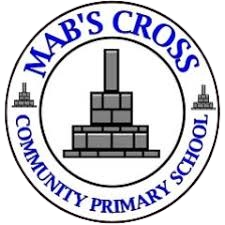Computing
MAB’S CROSS PRIMARY SCHOOL
COMPUTING CURRICULUM
INTENT
At Mab’s Cross, we aim to equip our students with the necessary computing skills and knowledge to succeed in an ever-changing technological world. Computing is taught through all aspects of our curriculum, to ensure children are engaged, motivated and safe. The focus of our computing curriculum is to prepare students with a variety of skills, enabling them to solve problems logically and creatively when using a range of new technologies. We want our children to be independent learners, show resilience and perseverance and have transferrable skills. With this in mind, computing is taught with links to the other STEM subjects of Maths, Science and Engineering. In an ever-changing world and in an area where technology, engineering and industry are strong, we want our children to be prepared and equipped for the 21st century and the world of work. Our curriculum drivers of independent learning and aspiration thread throughout our computing curriculum. We raise the profile of STEM through the use of STEM projects and the inclusion of STEM ambassadors in all year groups.
In EYFS, computing is linked to topics and skills developed through enhancements in continuous provision. In KS1, computing is planned and delivered via a series of six topics throughout the year plus six e-safety lessons. The emphasis is on children being taught the basic skills of computing, allowing them to access the different strands confidently. Children begin to work on simple programming, and use technology to create, organise, store, manipulate and retrieve digital content. Computing is also taught through topics in KS2, but the content is now deeper and of a wider range. Students work to solve problems and are encouraged to use a range of programs confidently. All children will follow the same topics in computing in-line with the class. However, we remove gaps and barriers to learning through the use of carefully sequenced lessons for children with SEND, looking back at previous steps in the learning journey. This is carefully sequenced in our progression documents.
IMPLEMENTATION
Teachers at Mab’s Cross have good subject knowledge. In particular, a lot of work has been completed on making links between the STEM subjects and ensuring planning reflects this across the school. Computing lessons are planned from Y1 –Y6 using Purple Mash computing plans to ensure all aspects of computing and e-safety are taught. In EYFS, children learn through enhanced provision and have access to a range of different types of technology throughout each topic. A STEM project is also planned for each year group, linked to a particular topic during the year, to provide connections to the other STEM subjects and raise aspirations through the use of STEM Ambassadors and visitors to school. We understand the need to establish a secure understanding of each block of knowledge to ensure genuine progression. Key vocabulary for the topic is reinforced throughout each topic. Skills progression documents clearly indicate where a topic is being revisited so that pupils can build on their previous subject knowledge. Computing work is recorded in class floor books and pupil’s own folder on the shared drive, where possible. The evidence that is collected includes comments made by the children and photographs of practical work with observations made. At the end of a unit of work, teacher assessments are made based upon the observations of the computing lessons and assessment documentation is completed. In EYFS, all computing work is recorded in a topic floor book. Key assessment documents for computing are passed to the next class teacher at the end of the year. The school is well resourced with pupil laptops, iPads, and other computing resources, such as Bee Bots, Microbits and cross-curricular work is completed in different ways, including Now Press Play. We continue to investigate new technologies to develop our computing curriculum further.
IMPACT
At Mab’s Cross, the careful planning and implementation of our computing curriculum ensures that children are given the opportunity to commit their computing knowledge to their long-term memory. Computing work is challenging and builds on previous knowledge and understanding of the computing curriculum. Class Floor books are regularly monitored to ensure consistency across classes and skills progression through topics. Assessment documents are readily available for scrutiny by the technology team. The monitoring of computing also occurs using pupil voice discussions.
